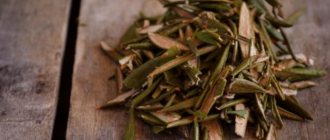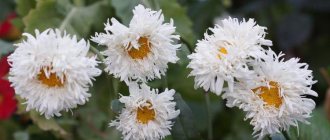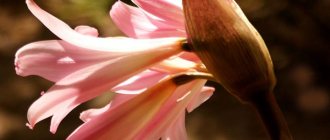Orchids are wonderful house plants that can decorate any interior. They are distinguished by long flowering, ease of care, variety of species, varieties, and colors.
It is customary to select phalaenopsis and some other species as indoor plants. These flowers are native to Australia but are found in the wild in Southeast Asia and the Philippines. There are more than 70 species of phalaenopsis, but only a few of them are grown as houseplants.
Description of the orchid
Almost all types of orchids are capable of blooming (subject to simple rules of caring for them) for a month. They look elegant and delightful, despite their simple structure. Each phalaenopsis bud consists of three outer sepals and three petals. In their center are the stamens and pistils. The orchid plant is an epiphyte (in nature it grows on other plants, using them as support).
When growing an orchid, it is important to consider that the most important part of it is the roots. They perform many functions:
- actively participate in photosynthesis together with leaves;
- attached to the substrate, due to which the plants maintain a vertical position;
- receive moisture and nutrients.
Important: epiphytic orchid flowers grow well at home. The main thing is to provide them with proper care so that they bloom profusely and for a long time.
Varieties
The so-called orchid family includes more than 4 thousand species of orchids. Botany distinguishes five subfamilies:
- Apostasiaceae, which includes apostasia and nonvidia, are common in the forests and mountains of Southeast Asia, and are small in size;
- Cypripediaceae - its representatives have an original appearance (“lady’s slipper” and other unusual forms), bright beauty, grow on all continents except Africa and the Arctic;
- Vanilla, distinguished by a powerful climbing stem, has long served as a raw material for the production of vanilla, their territory is Africa, America and Asia;
- Epidendriaceae, the most numerous subfamily, is found in the tropics, subtropics and temperate latitudes;
- Orchids grow both in the tropical zone and in Russia (Lubka bifolia, orchids, etc.).
Among the genera, the most famous is phalaenopsis (white orchid, vanda, etc.). Photos of popular orchids are easy to find on the Internet.
The article provides general guidelines to follow. But some capricious species have their own additional requirements (higher temperature, humidity, etc.).
Plant care
Having decided to purchase an orchid, you need to learn how to care for it. This plant, although unpretentious in care, requires compliance with certain rules.
Tip: it is best to place the flower on a western, eastern or north-eastern window sill. If you place a pot of plants on windows facing south, you should definitely darken it. Otherwise, the plant will get sunburn.
Lighting
The duration and regularity of flowering of phalinopsis directly depends on lighting. With a lack of light, the flower actively grows green mass and does not throw out arrows with buds. It is easy to notice the lack of light by the light color of the leaves and the absence of purple spots on their back side. The orchid requires 12-15 hours of daylight. Therefore, in winter she needs additional lighting using fluorescent lamps.
Temperature
The growing temperature of orchids plays an important role for the active growth of phalaenopsis. All biochemical processes in orchids occur only at an air temperature of 18-30 degrees Celsius.
Attention: for active growth and flowering, the air temperature in the room should be 20-25 degrees above zero.
Humidity
Indoor orchid grows and blooms well at air humidity of 60%. If the humidity in the room is insufficient, you need to install a humidifier or simply place an open vessel with water next to the pot.
Watering
Watering an orchid is the most important step in caring for it. This plant is moisture-loving, and drying out of the soil negatively affects its health. In addition, it receives all its nutrients either from the soil or from the water.
Tip: It is recommended to water the orchid with rain or filtered water. If tap water is used, it must sit for at least 24 hours.
Many beginners are interested in the question: when and how to water an orchid? You can tell when it’s time to water a flower by the condition of the soil in the pot. It must be completely dry. Also, the fact that it is time to water the plant is indicated by its light roots located on the surface of the pot.
Important: if the orchid has rich dark green roots, it means that everything is fine with its care.
You can water orchids in different ways. The most popular are:
- strait Water is poured along the edges of the flowerpot, and it flows down the walls into the tray. This leaves a small amount of liquid in the pot. Spills are most often used after transplanting plants into new pots;
- complete immersion in water. The pot with the plant is placed in a basin or other container with water at room temperature for 15 minutes. The plant itself absorbs as much moisture as it needs. This is ideal if the flower is healthy and strong;
- partial immersion. Used when necessary to moisten the soil;
- Place in a pan of water for 6 hours. In this way, not only the roots of the flower are moistened, but also the substrate. This method is used for orchids that have problems with the root system;
- warm shower. Phalaenopsis love this procedure and need it. In this case, the water temperature should be about 40 degrees Celsius. After a shower, the plant should not be immediately placed on a cool windowsill. It must cool down naturally. After taking a warm shower, the casting and socket are wiped dry with a napkin. The main thing is that water does not accumulate in the center of the outlet. Otherwise, the plant will begin to rot.
Priming
Despite the fact that almost all indoor flowers grow in the ground, the orchid is an exception. It requires a special substrate consisting of tree bark, sand, forest moss, and peat. It is better to purchase ready-made store-bought soil for orchids. But if you wish, you can prepare it yourself. For this you will need:
- pine bark (necessarily from a dead tree). It is thoroughly crushed, boiled and dried;
- sand (coarse);
- charcoal;
- expanded clay (you can add foam chips).
Advice: if you add fallen leaves from trees and crushed fern roots to the substrate, then you don’t have to feed it additionally for a long time.
Choosing a pot
Orchids are usually grown in translucent flowerpots. This makes it easier to monitor the condition of their root system. But sometimes experienced gardeners transplant them into ceramic pots. It is better to choose pots that are white or another light shade. Since they will bask less in direct sunlight. Orchids also grow well in wicker pots or baskets.
Circumcision
You can understand that an orchid needs pruning by the following signs:
- the peduncle began to turn yellow or turn brown;
- instead of a peduncle, only a dry stick remained;
- The shoot is green for more than 6 months, the plant does not bloom.
Tip: in many types of orchids, flowers can bloom repeatedly on the same arrow. Therefore, it is recommended to trim it after it has completely dried on its own.
The faded peduncle is cut off at a distance of 3 cm from the rosette. This can be done either with scissors or with a sharp knife. After pruning, the plant must be treated with a solution of potassium permanganate, brilliant green or activated carbon. In addition to the flower stalk, some types of orchids require pruning of leaves.
Top dressing
It is necessary to fertilize the flower regularly. Then it will bloom long and abundantly. Only store-bought complex additives are used as fertilizers. When applying fertilizers, it is important not to overdo it. Otherwise, the plants’ leaves will begin to crack due to the excess of beneficial minerals and macroelements.
Phalaenopsis are fed during the period of watering. Fertilizer is added to a container with warm and well-filtered water. Its quantity is always indicated on the label.
The best fertilizers for orchids are: “Bona Forte”, “Kristalon”, “Greenworld”. If a plant does not bloom for a long time, it can be stimulated with such preparations as: “Bud”, “Ovary”, “Plumen”.
Attention: in order for the orchid to absorb vitamins, fertilizing is carried out only on a moist substrate.
Transfer
When buying a healthy flower, there is no need to transplant it into another pot. The main thing is to make sure that the plant is not sick and is not susceptible to attack by pests.
Attention: it is recommended to replant orchids every 2-3 years. When the substrate loses its beneficial properties.
It is quite easy to understand that a flower needs to be transplanted into a new substrate. The bark becomes brittle, brittle, and emits an unpleasant odor. The flower is transplanted only after flowering. To do this, select a larger pot and add fresh soil to it.
Reproduction
Orchids are propagated using new shoots, seeds (but this cannot be done at home), and by dividing the rhizome.
To propagate an orchid by dividing the rhizome, it is enough to separate the young lateral shoots from it. They are cut off at the base of the leaves. It is recommended to carry out this procedure a month after the flower has faded. The branches on which new leaves have appeared and the length of the roots have reached 5 cm are planted separately. After separating the plant from the mother bush, the branch is dried during the day and planted in the substrate only the next day.
Attention: baby orchids should not outgrow the mother bush. Otherwise, they will not take root in the new place.
Typically, indoor phalaenopsis always develop lateral shoots. And if they are not there, this indicates improper care of the orchid. The appearance of new buds can be caused artificially. To do this, you need to find dormant buds on old branches and use a sharp blade to make cuts on them. The cut areas must be treated with an orchid growth regulator.
Banana peel fertilizer
There is a widespread belief online that banana fertilizer is very miraculous and effective for many flowering plants, including orchids.
But no matter how they prepare it, and mostly like mash. I would like to warn orchid lovers and give the correct recipe for banana fertilizer:
- 4 banana peels
- 1 tablespoon sugar
- 1 liter of water
How to make banana peel fertilizer: Boil for about 20 minutes. Let cool. Strain through two or three layers of gauze. Water orchids by immersion. Once every two weeks, no more often.
There is no need to infuse the mash, and do not forget to strain, otherwise your orchids will receive nothing but a breeding ground for bacteria and fungi.
Diseases and pests
Orchids, like other indoor and garden flowers, sometimes get sick and various pests infest them. Diseases in these magnificent indoor flowers can be infectious or non-infectious. But they all happen due to improper care. It is quite easy to understand whether a plant is sick or not if you look closely at the condition of its leaves and roots. Let's take a closer look at what diseases and pests of orchids are dangerous.
Diseases
The most common diseases of orchids are:
- fungus. This happens due to excessive watering. The disease begins with rotting of the roots, which spreads to the leaves, stem and entire plant. It is impossible to cure the flower in this case;
- bacterial leaf spot. To do this, all diseased leaves are removed with scissors, and the sections are treated with brilliant green or activated carbon;
- anthracnose When treating a plant, it is necessary to remove all affected areas and treat it with Previkur, Profit or Sandofan;
- rust. The disease is quite serious, but can be treated. The plant is thoroughly washed under running water, and the substrate in the container is replaced with a new one. Then the flower is completely sprayed with a weak solution of manganese and treated with special preparations (“Orchid Manual”);
- hives. It is characterized by the appearance of large spots on the leaves, up to 3 cm in diameter. This occurs due to poor indoor air. It may be too dry or wet. The solution is to ventilate the room more often and maintain a certain temperature and air humidity in it.
Pests
Of the pests, orchids are attacked by:
- mealy worm. The disease manifests itself as yellowing and falling leaves;
- spider mite. Appears on leaves in dry indoor air. Spider mites can be easily spotted by the cobwebs formed on the leaves. At the initial stage of the disease, a regular soap solution will help, with which you need to thoroughly wipe all the leaves. If the flower is heavily damaged, only specialized products will help.
But if you care for the orchid properly, then it will not be afraid of either diseases or pests.
Varieties for growing at home
Popular types and varieties of orchids that are suitable for home growing are:
- Arachnis. Externally, the plant looks like a spider. For active growth and flowering at home, the plant must be provided with a warm environment with high humidity and bright light. The flower is watered abundantly only during the period of active growth;
- Dendrobium phalaenopsis. Characterized by bright colors. The buds bloom regardless of the time of year. Their colors range from rich purple tones to snow-white;
- Phalaenopsis Sakura. Suitable for those who love Japanese culture. This is a gentle and romantic look that captivates flower lovers with smooth transitions of pastel shades;
- Royal orchid Vanda. Characterized by a large number of buds on one peduncle. At first the flowers are pale, but over time they become more saturated in color;
- Cattleya. A rather difficult flower to grow at home. Prefers a temperate warm climate. It is characterized by large leaves that reach 20 cm in diameter. The petals are covered with a waxy coating. It blooms for three weeks in all sorts of shades from soft pink to rich purple tones;
- Miltonia. The easiest flower to grow at home, which is just as popular, is phalaenopsis. Its leaves reach a length of 40 cm. They have an unusual gray-yellow color. And the velvety buds can come in all sorts of colors;
- Butterfly orchid (phalaenopsis). The most common type, which is sure to be present in the collection of indoor flower lovers. Its leaves are green and succulent. The color of the buds is varied. This is the most unpretentious flower to grow.
We looked at what varieties of orchids exist for home cultivation, how to properly care for them, and how to propagate them. If everything is done correctly, the plant will not get sick and will delight the owners with colorful, abundant and long-lasting flowering.
By the way
Flowering time of the most beautiful types of orchids:
In spring:
cattleya citrina and labiata, cymbidium lovianum, dendrobium denziflorum, miltonia vexillaria, odontoglossum (crispum, rossi, cardatum, maculatum, pescatori), phalaenopsis schilleriana.
In summer:
Cattleya labiata and Dendrobium moshatum, Laelia cripsa and purpurea, Oncidium incurvum, Tunia alba.
Autumn:
Cattleya labiata and Garissoni, Dendrobium chrysantum, Lelia autumnalis, Odontocan, Vanda cerulea.
In winter:
Kalanche Veici, Cattleya trianei, Coelogine cristata, Cypripedium insigne, Dendrobium nobile, Laelia anceps and albida, Lycaste skinneri and aromatica, Oncidium ornithorhynchum.











